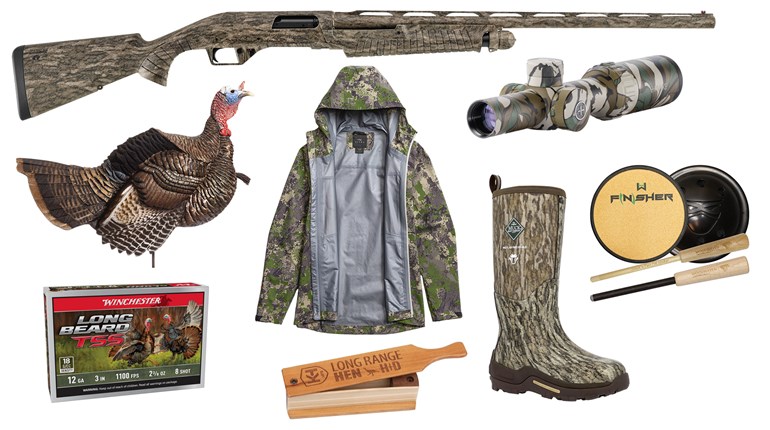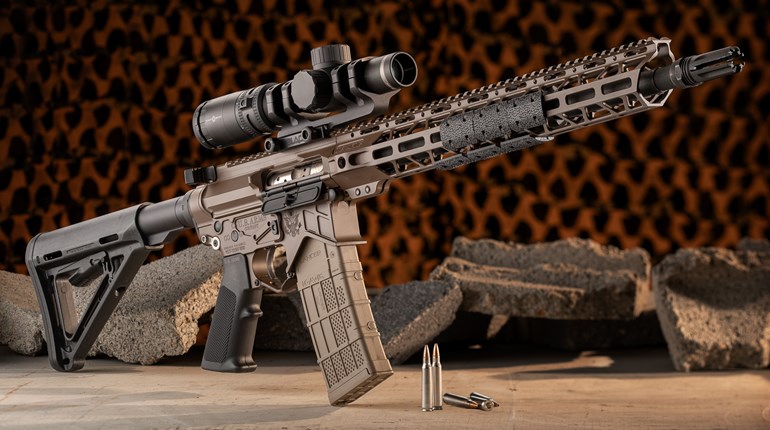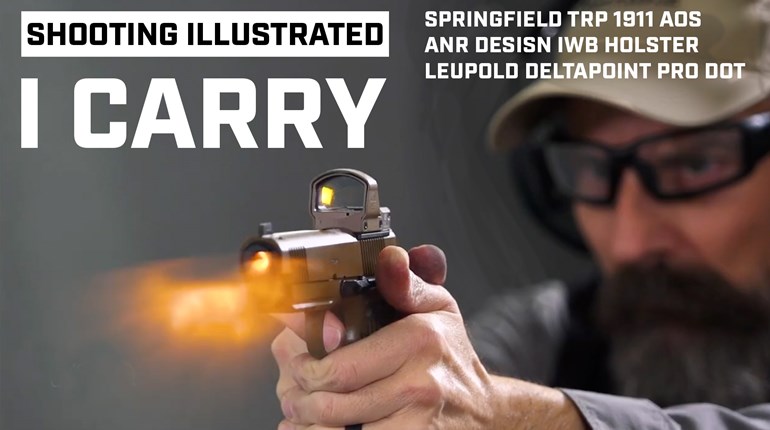
After 35 years, Federal still offers a Hydra-Shok load in its line for law enforcement (as well as an entire array marketed to armed citizens). It remains a top choice for defensive purposes.
In my column in the March issue of Shooting Illustrated, I wrote about the Nosler Partition because it’s arguably the first and best premium rifle bullet ever engineered. This month I want to introduce you to another projectile. This one is almost as legendary, but it was created for defensive handguns. In 1989, Federal introduced the Hydra-Shok bullet. It quickly became the de facto standard for terminal performance as it relates to personal protection. Thirty-five years later, it’s still being made—and it’s still being trusted.
Credit for the design of the Hydra-Shok projectile goes mostly to Tom Burczynski, who had worked with many ammunition companies to help develop better self-defense handgun bullets like the Starfire and the EFMJ. The impetus for the original Hydra-Shok bullet was a request from the FBI for a projectile with better terminal ballistics than traditional cup-and-core projectiles. A cup-and-core bullet describes a bullet where a copper or gilding-metal jacket is formed into a cup, and a lead core is then inserted.
Burczynski created the first Hydra-Shok prototype bullet in the mid-1970s. He was driven by the inability of conventional hollow-point bullets to upset—expand to greater than their initial diameter—at low velocity. Burczynski incorporated a simple machine into the hollow-point cavity of the bullet. This machine was nothing but a wedge or tapered post at the center of the hollow-point cavity that would work to drive incoming material outward against the internal wall of the hollow-point cavity.
As Burczynski wrote in the 1992 book “Street Stoppers,” by Evan Marshall and Ed Sanow, “This fluid ‘deflection’ would create a brief, but intense, radial impulse which would initiate expansion hydraulically by way of high-pressure force vectors.” Ultimately, Burczynski received patents for his design and began making bullets. Some were sent to the State Department for testing, as it wanted a bullet that would upset and penetrate between 7.5 and 8.5 inches in 20-percent ordnance gelatin. It bought into the concept, and this positive exposure drove the FBI to order six million Hydra-Shok bullets.
Word got out, but Burczynski could not meet the demand, so he met with Federal and agreed upon an exclusive manufacturing license. And then, through further innovation, the rest is history. The Hydra-Shok became one of the most trusted self-defense hand-gun bullets of all time. When I was hired as a police officer in 1992, my department had just transitioned from .357 Mag. revolvers firing Winchester Silvertips to Glock G22s loaded with 180-grain Hydra-Shoks. Many police departments across the United States were issuing the Hydra-Shok as duty ammo as well. In the mid-’90s, almost everyone I knew who carried a handgun for self-defense—police officer or private citizen—had it loaded with Hydra-Shoks.
Not only does the Hydra-Shok design help bullets upset at slower velocities, but it also circumvents another problem associated with conventional JHP bullets. When shooting through fabric (clothing), conventional hollow-point bullets can become plugged with fabric and often fail to upset. When fabric enters the Hydra-Shok’s hollowpoint cavity, it’s pierced by the post and then shoved to the base of the cavity. This leaves the tip of the post exposed to direct that fluidic material outward, and the bullet still upsets as intended.
But, over time the FBI performance requirements evolved. Its testing protocol changed, too. One of the most notable changes has been the desire for deeper-penetrating rounds and more consistency in penetration depths, especially through intermediate barriers. This led to the introduction of Federal’s HST in 2002. The Federal HST bullet is different from the Hydra-Shok and is arguably more popular now. Instead of a central post to redirect fluidic material, the HST relies on skives etched into the bullet jacket. This lets the bullet perform better when passing through intermediate barriers, which is key to performing to the FBI’s standard. HST is now quite popular with law enforcement agencies, much like the Hydra-Shok was back in the ’90s. While the Hydra-Shok name is somewhat descriptive of how that bullet works, many wonder what HST stands for. Well, rumor has it that HST is an acronym for “Hydra-Shok Two.”
Then again in 2018, Federal decided to improve on the Hydra-Shok so it would score significantly better when exposed to FBI protocol testing. In the 35 years since the introduction of the original Hydra-Shok, Federal engineers had learned a lot about terminal ballistics and projectile performance. Although the original Hydra-Shok remains quite effective, designers knew they could make it better. Based on the time-tested and iconic original Hydra-Shok platform, the new Hydra-Shok Deep bullet proved better at meeting modern performance standards. It delivers more consistent and reliable performance through typical defensive barriers, and better penetrates to the depth deemed optimum by the FBI.
Since 1989, the Hydra-Shok bullet has evolved, and maybe—secretly—it has a sibling named HST. Regardless, it will likely go down in history as one of the best self-defense handgun bullets ever created. Federal still offers a full line of tactical law enforcement ammo loaded with Hydra-Shok bullets, and currently, in its personal-defense line, Federal offers Hydra-Shok ammo for the .32 ACP, .327 Fed. Mag., .380 ACP, 9 mm, .38 Spl., .357 Mag., .40 S&W, .44 Mag. and the .45 ACP. It now also offers Hydra-Shok Deep ammo for the .32 ACP, .380 ACP, 9 mm, .38 Spl., .40 S&W and .45 ACP.
In today’s world of bonded defensive handgun bullets, the Hydra-Shok may no longer shine as bright as it once did. However, similar to the Nosler Partition, it remains a bullet by which others will be judged.





































